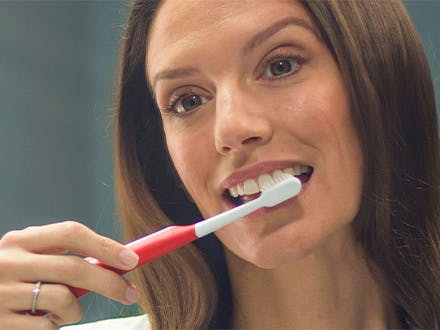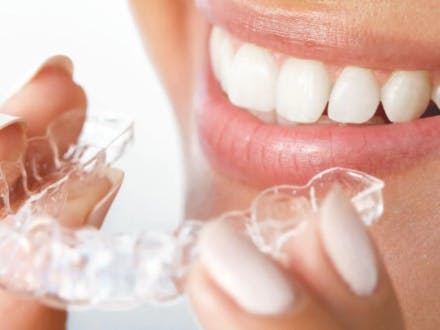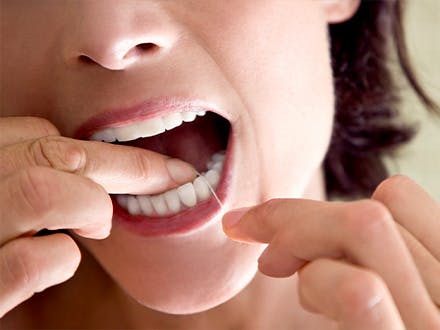Gum problems can be caused by plaque bacteria that builds up around, on and in between your teeth. If this bacteria is not removed by regular brushing and flossing it can irritate gums, leading to red, swollen and bleeding gums, which are all early gum disease symptoms, known as gingivitis.
If these signs of gum disease are left untreated, small 'pockets' may develop between teeth and gums. As these pockets deepen it can eventually lead to periodontitis, which is one of the most serious types of gum diseases. Once you reach this stage of gum disease, damage may have occurred, and if left untreated can lead to tooth loss.
This is why it is important to stop this journey at the early stages by to keep your gums healthy.
HEALTHY TEETH START WITH HEALTHY GUMS
Healthy gums are vital for strong teeth and the best way to make sure gums stay healthy is with a good oral health routine.
It takes just three simple steps to keep gums and teeth clean and help improve gum heath.
STEP 1 - Brush your teeth twice a day with parodontax daily fluoride toothpaste
Brush your teeth twice a day for at least two minutes using a manual or electric toothbrush with a small head and soft, rounded bristles. Use parodontax Daily Fluoride Toothpaste, which physically removes the build of plaque bacteria along the gum line, helping to keep the seal between your gums and teeth tight. When used to brush twice daily it removes 4x more plaque than a regular toothpaste*1 removing a main cause of bleeding gums**.
*versus regular toothpaste with twice daily brushing, removing a main cause of bleeding gums.
**This claim does not apply to parodontax Whitening
1. 6-Month Randomised Controlled Study, Journal of Clinical Dentistry 2018;29:33-39 using toothpaste containing 67% sodium bicarbonate, with twice daily brushing. Individual results may vary.
STEP 2 - Floss to remove plaque from between your teeth
Use dental floss or an interdental brush to remove plaque from hard to reach areas between your teeth. Remember to ease the floss gently into place as otherwise you could harm your gums.
STEP 3 - Regularly visit a dentist to remove plaque build-up and help prevent gum problems
Visit the dentist regularly for check-ups, as a professional can help spot problems with your gums before you experience any symptoms. Your dentist can also clean, scale and polish your teeth to remove stubborn build-up of plaque bacteria (calculus) and help to prevent gum problems.
Stick to these simple steps to keep your gums healthy and teeth strong.
WHAT IF I ALREADY HAVE GUM PROBLEMS?
If you are experiencing any of these symptoms of gum problems or even already have gingivitis, it can worsen and lead to tooth loss if left untreated or ignored. Do see and speak to your dentist as soon as possible.
PM-SG-PAD-22-00009
MAHP2200049
ABOUT GUM DISEASE
Explore the articles below to learn more about gum disease, as well as how to help combat and prevent it.



